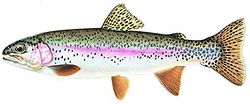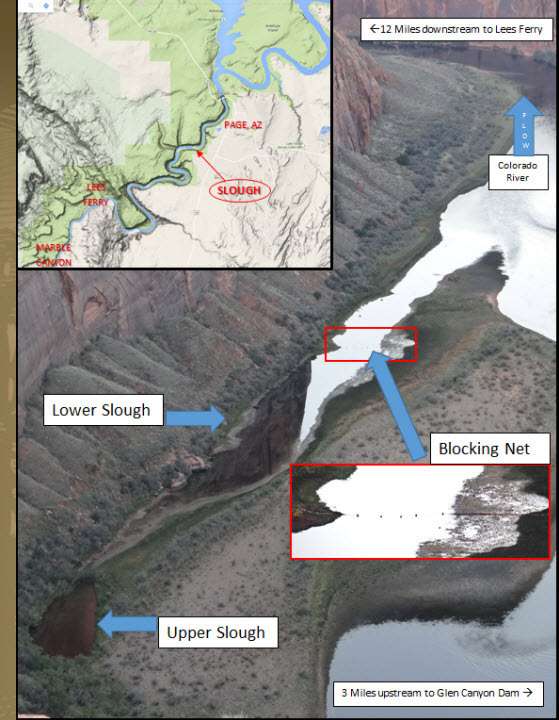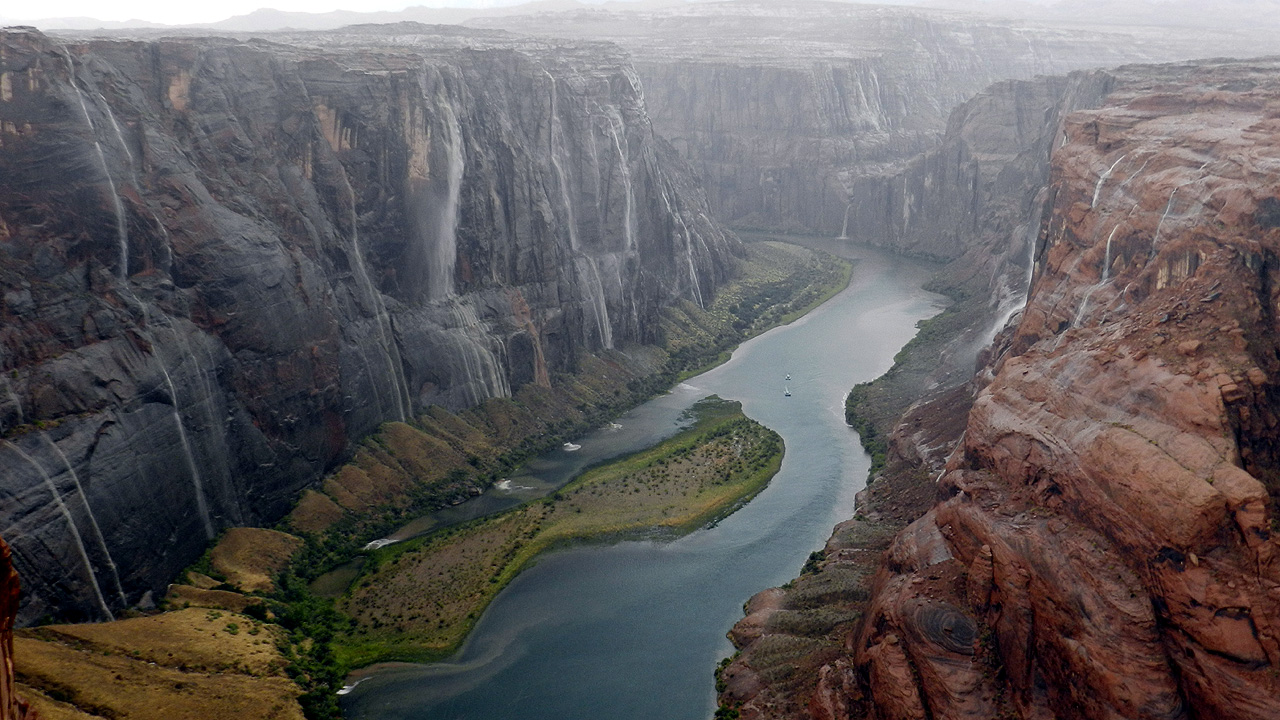Difference between revisions of "Green Sunfish Page"
Cellsworth (Talk | contribs) |
Cellsworth (Talk | contribs) |
||
| Line 30: | Line 30: | ||
'''Location and Habitat:''' | '''Location and Habitat:''' | ||
| − | Found in most warm water lakes and streams in Arizona and even in a few trout lakes in the White Mountains and Mogollon Rim. Prefer lakes with rocky substrate and piles of rubble, but can be in slow moving rivers and riverine backwaters. Green sunfish have salinity tolerances of less than 0.36% and will not tolerate salinity greater than 0.56%. The LCR has a naturally high salinity at baseflow ranging from 0.22% - 0.36%. | + | Found in most warm water lakes and streams in Arizona and even in a few trout lakes in the White Mountains and Mogollon Rim. Prefer lakes with rocky substrate and piles of rubble, but can be in slow moving rivers and riverine backwaters. [http://www.nwrc.usgs.gov/wdb/pub/hsi/hsi-015.pdf Green sunfish have been found at a wide range of stream gradients, varying from 0.2 to 5.7 m/km; however, they are most abundant at lower (s 2 m/km) gradients. They prefer small to medium-sized « 30 m width) streams. Green sunfish have salinity tolerances of less than 0.36% and will not tolerate salinity greater than 0.56%.] [https://pubs.er.usgs.gov/publication/70040717 The LCR has a naturally high salinity at baseflow ranging from 0.22% - 0.36%.] |
| + | |||
| + | '''Temperature:''' | ||
| + | [http://www.nwrc.usgs.gov/wdb/pub/hsi/hsi-015.pdf The temperature preference for adult green sunfish is 28.2° C and, when possible, they avoid temperatures above 31° C or below 26° C. Growth and food conversion efficiency increased as temperature increased from 13.2 to 28° C. Optimal temperature for spawning and subsequent development ranges from 20 to 27° C. Spawning will not occur below 19° C or above 31° C. Optimal temperatures for fry range from 18 to 26° C. The range of tolerance for bluegill fry is 10 to 36° C, and it is assumed that green sunfish fry tolerances are similar. Temperature requirements for juveniles are assumed to be the same as those for the adult life stage.] | ||
'''Reproduction:''' | '''Reproduction:''' | ||
Revision as of 11:58, 21 September 2016
|
Green Sunfish (Lepomis cyanellus)Description: Native to the Great Lakes, Hudson Bay and the Mississippi River basin. Introduced into Arizona in 1926. Large mouth with blue-green striations on the cheeks. Opercle flap is black with reddish or orange border. Bodies olive-green in color, dark vertical bars are faintly seen on sides. Pectoral fin short and rounded. Caudal fin and lower fin margins are white or yellowish with dusky spots at rear of dorsal and anal fins. Length: 3 to 12 inches. Weight: 3 ounces to 1 pound 8 ounces. May live to nine years. Location and Habitat: Found in most warm water lakes and streams in Arizona and even in a few trout lakes in the White Mountains and Mogollon Rim. Prefer lakes with rocky substrate and piles of rubble, but can be in slow moving rivers and riverine backwaters. Green sunfish have been found at a wide range of stream gradients, varying from 0.2 to 5.7 m/km; however, they are most abundant at lower (s 2 m/km) gradients. They prefer small to medium-sized « 30 m width) streams. Green sunfish have salinity tolerances of less than 0.36% and will not tolerate salinity greater than 0.56%. The LCR has a naturally high salinity at baseflow ranging from 0.22% - 0.36%. Reproduction: Males build nests in shallow pools over gravel, sand or bedrock. The nests are usually within a couple feet of each other. The male guards the nest and hatched fry. Males constantly show defensive displays and fight with other males who come too close. Food: Green sunfish will eat anything they can catch and swallow. Aquatic and terrestrial insects and invertebrates are the most common food items. Small crayfish, fish and frogs are all in danger when green sunfish are present. Angling: Because of their highly predaceous and pugnacious nature they are one of the easiest fish to catch. They are always hungry and readily bite on small worms and insects. They readily take small jigs, spinners and spoons, as well as nymphs and small streamers. Green sunfish are great for teaching kids how to fish. |
 Rainbow Trout |
 Fish Species of the Colorado River in Lower Glen Canyon and Grand Canyon |
 Brown Trout |
|---|
|
|


